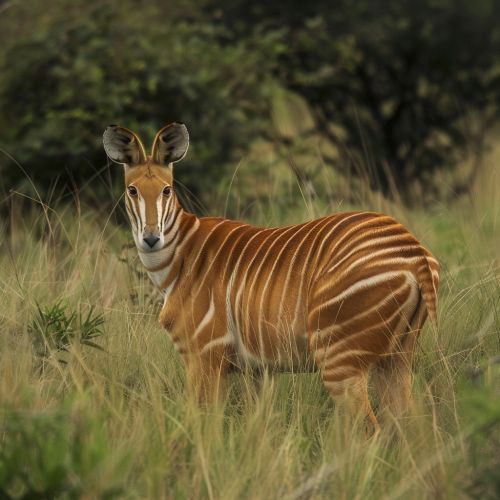Quagga
Taxonomy and Evolution
The Quagga (Equus quagga quagga) is an extinct subspecies of the plains Zebra that was once found in great numbers in South Africa's Cape Province and the southern part of the Orange Free State. It was characterized by its unique stripes, which were more pronounced on the front part of the body and faded to a plain brown on the rear and underside. The Quagga is one of the most famous animals to have become extinct, and it is a powerful symbol of the loss of biodiversity.
The Quagga was originally classified as a distinct species, Equus quagga, by Pieter Boddaert in 1785. However, later genetic studies revealed that it is a subspecies of the plains Zebra, leading to its reclassification as Equus quagga quagga. This classification was based on the analysis of mitochondrial DNA (mtDNA) sequences, which showed that the Quagga had diverged from the other zebra species around 200,000 years ago.


Description and Behavior
The Quagga was a medium-sized equine, standing about 135 cm (53 in) tall at the shoulder and measuring about 275 cm (108 in) in length. Its most distinctive feature was its pattern of stripes, which were bold and black on the head, neck, and front of the body, and faded to a plain brown on the rear and underside. This pattern made the Quagga unique among zebras and other equines.
Like other zebras, the Quagga was a social animal, living in small family groups of a single stallion, one to three mares, and their recent offspring. They were known to be quite vocal, with a call that was described as a loud, barking "kwa-ha-ha". The Quagga was a grazer, feeding primarily on grasses. Its habitat was the grassy plains and lightly wooded areas of the Cape Province and the southern part of the Orange Free State.
Extinction
The Quagga was hunted to extinction by the early settlers of South Africa, who saw it as a competitor for valuable grazing land for their cattle and sheep. The last known individual died in the Amsterdam Zoo on 12 August 1883. Its extinction was not immediately recognized, as it was believed that other zebras with reduced striping could be Quaggas. However, by the early 20th century, it was accepted that the Quagga was indeed extinct.
Quagga Project
In 1987, the Quagga Project was initiated by Reinhold Rau in South Africa with the aim of recreating the Quagga by selective breeding from plains zebras. This project is based on the fact that the Quagga was not a distinct species, but a subspecies of the plains zebra. The project has been successful in producing zebras that resemble the Quagga in terms of reduced striping and body color. However, it is not known whether these "Rau-Quaggas" are identical to the original Quaggas in terms of their genetic makeup.
